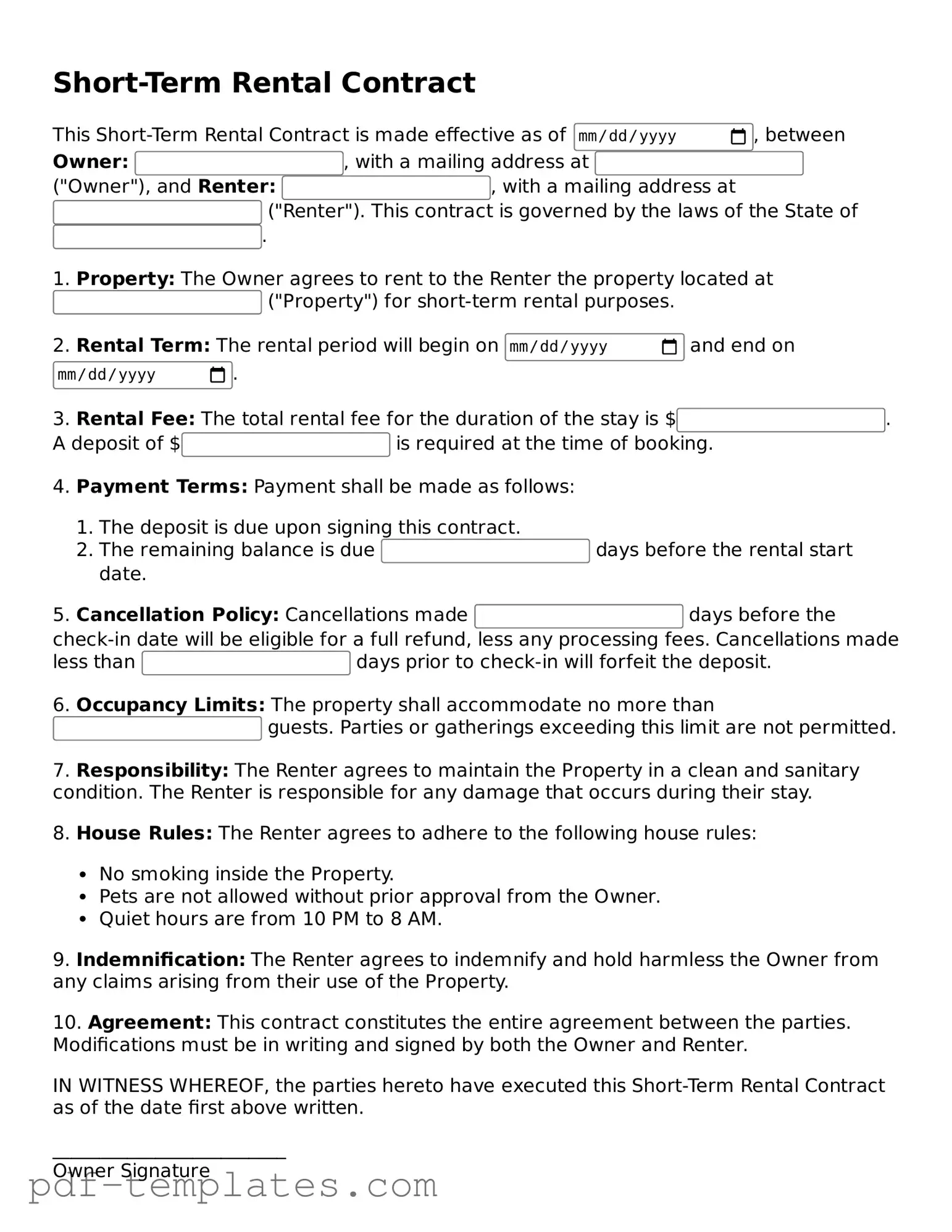The Lease Agreement is a formal document that outlines the terms between a landlord and tenant for renting a property. Like the Short-Term Rental Contract, it specifies the duration of the rental period, the amount of rent due, and the responsibilities of both parties. While a lease typically covers longer terms, both documents serve to protect the interests of the property owner and the renter, ensuring clarity and legal compliance.
The Rental Application is another document that shares similarities with the Short-Term Rental Contract. It is used by property owners to screen potential tenants. Both documents require personal information and may include background checks, employment verification, and references. The Rental Application helps landlords assess the suitability of renters, while the Short-Term Rental Contract formalizes the agreement once a tenant is selected.
A Guest Registration Form is often used in short-term rental situations. This document captures essential information about guests, such as identification and contact details. Similar to the Short-Term Rental Contract, it establishes a record of who is staying at the property. Both documents help ensure that property owners know who is on their premises, which can enhance security and accountability.
The Property Management Agreement is relevant for landlords who hire property managers to oversee their rental properties. This document outlines the responsibilities of the property manager, including leasing, maintenance, and tenant relations. Like the Short-Term Rental Contract, it defines the terms of engagement and the expectations of both parties, ensuring that property management is handled effectively.
The Terms and Conditions document is often associated with short-term rentals. It outlines the rules and regulations that guests must follow during their stay. Similar to the Short-Term Rental Contract, it sets clear expectations regarding behavior, payment, and property use. Both documents aim to protect the property owner while ensuring that guests understand their obligations.
The Cleaning Agreement is another document that complements the Short-Term Rental Contract. It specifies the cleaning services to be provided before and after a guest’s stay. Both documents emphasize the importance of maintaining the property’s condition. While the Short-Term Rental Contract focuses on the rental terms, the Cleaning Agreement ensures that the property is ready for each new guest.
For those seeking a clear understanding of the terms involved in renting a room, a thorough examination of the detailed Room Rental Agreement form is highly recommended. This document ensures that both landlords and tenants are aware of their respective rights and obligations, fostering a transparent rental process.
The Security Deposit Agreement is crucial in rental situations. It outlines the amount of the security deposit, conditions for its return, and deductions that may be made for damages. Similar to the Short-Term Rental Contract, it provides a framework for financial accountability and helps protect the property owner's investment while also informing renters of their responsibilities.
The Lease Termination Agreement is relevant when a rental period comes to an end. This document outlines the process for ending the lease, including any required notice periods. Like the Short-Term Rental Contract, it ensures that both parties understand their rights and obligations at the conclusion of the rental term, helping to prevent misunderstandings.
The Move-In/Move-Out Checklist is often used in conjunction with rental agreements. It details the condition of the property at the beginning and end of a rental period. Similar to the Short-Term Rental Contract, it serves as a record that can help resolve disputes regarding security deposits and property damage. Both documents play a role in maintaining transparency between landlords and tenants.
The Eviction Notice is a legal document that may be used in situations where a tenant violates the terms of their rental agreement. It outlines the reasons for eviction and the steps the tenant must take to remedy the situation. While it serves a different purpose than the Short-Term Rental Contract, both documents are essential in defining the rights and responsibilities of the parties involved in a rental agreement.
